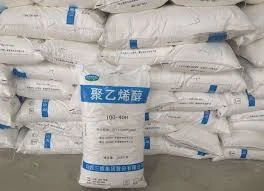The Role of Cement Chemistry in Construction
Cement plays a crucial role in the construction industry, serving as one of the primary binding agents in concrete. Understanding the chemical composition and properties of cement is essential not only for optimizing its performance but also for enhancing the durability and sustainability of concrete structures. This article delves into the chemical makeup of cement, its hydration process, and the implications for construction practices.
The Role of Cement Chemistry in Construction
The hydration of cement is a complex chemical reaction that occurs when water is added to cement. This process leads to the formation of various hydration products that fill the voids in the mix, binding the aggregates together to form a solid mass. The main products of hydration include calcium silicate hydrate (C-S-H), which provides most of the strength in concrete, and calcium hydroxide (CH), which has a limited contribution to strength but plays a significant role in the alkalinity of the concrete mix. The production of these hydration products is critical in determining the final properties of concrete, such as strength, workability, and durability.
cement chemical

One of the notable challenges in cement chemistry is the issue of environmental sustainability. The cement industry is one of the largest consumers of energy and also produces a significant amount of CO2 emissions due to the calcination of limestone and energy consumption during production. As such, there is a growing emphasis on reducing the carbon footprint associated with cement production. This has led to the development of alternative cements, such as blended cements that incorporate materials like fly ash, slag, or silica fume. These materials not only enhance the mechanical properties of concrete but also mitigate environmental impacts by utilizing industrial by-products that would otherwise contribute to landfill waste.
Moreover, the advancements in chemical admixtures have revolutionized the way cement is used in construction. Admixtures such as superplasticizers, retarding agents, and accelerators can be added to the concrete mix to modify its properties, such as workability, setting time, and strength development. By understanding the chemical interactions between cement and these admixtures, engineers can tailor concrete mixes to meet specific project requirements while maximizing performance and durability.
In addition to improving the sustainability and performance of concrete through alternative materials and admixtures, ongoing research in cement chemistry aims to enhance the overall understanding of its properties at a molecular level. Nanotechnology, for instance, is now being explored to improve the hydration process and the formation of hydration products. This research could lead to the development of new types of cement that offer superior strength and durability while reducing the environmental impact of traditional cement.
In conclusion, cement chemistry is a fundamental aspect of construction that influences the quality and sustainability of concrete. By grasping the complex chemical processes involved in cement hydration and exploring innovative mixtures and technological advancements, the construction industry can work towards more efficient and environmentally friendly practices. As the demand for durable and sustainable structures continues to rise, a deep understanding of cement chemistry will be essential for engineers and architects aiming to build the future.
-
Rdp Powder: Key Considerations for Wholesalers in the Building Materials IndustryNewsJul.08,2025
-
Key Considerations for Wholesalers: Navigating the World of Hpmc - Based ProductsNewsJul.08,2025
-
Hpmc Detergent: Key Considerations for WholesalersNewsJul.08,2025
-
Key Considerations for Wholesalers: China Hpmc For Tile Adhesive, Coating Additives, Concrete Additives, and MoreNewsJul.08,2025
-
Crucial Considerations for Wholesalers: Navigating the World of Construction MaterialsNewsJul.08,2025
-
Key Considerations for Wholesalers Sourcing Additive For Cement, Additive For Concrete, Additive For Putty from Additive Manufacturer Shijiazhuang Gaocheng District Yongfeng Cellulose Co., Ltd.NewsJul.08,2025




